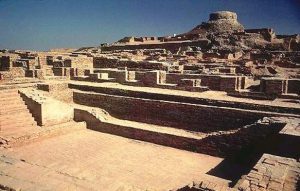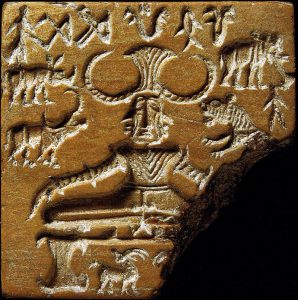The Indus Valley Civilization is an old civilization that is said to have flourished in the northwestern regions of South Asia between the third and second millennia BCE. Major excavations of sites relating to IVC carried out in the early twentieth century by Archaeological Survey of India still fuels fiercely debated theories in Indian history.
During the nineteenth century, before the excavations, the Colonial masters had just begun to realize that the Indian subcontinent wasn’t as ‘primitive’ as they thought it was and that there was a rich history and culture that dated back by millennia back to the Vedic people. Linguists based on connections between Sanskrit and Latin put forth theories during this time that associated the Vedic people to the European centric Aryan race. The Europeans attempted to link the advanced society of early India to the Aryan race to re-establish that they were the greatest race.
The discovery of the IVC sites presented a new problem. The sites that were excavated uncovered a humongous city with a citadel, bath, planned layout, marketplaces, assembly halls, large residential structures and facilities which suggests sophisticated social organization. The civilization was clearly an advanced one. But there is no concrete, abundant evidence to rightly place the IVC in the context of the Vedic people.
One of the items found by the excavators in Mohenjo-Daro, an IVC site, was the ‘Pashupathi Seal.’ The small seal that depicts a horned-figure surrounded by four animals, a rhino, an elephant, a buffalo and a tiger with an inscription in an unknown, un-deciphered language.
Some historians push the theory that the seal was an early depiction of the Hindu god ‘Shiva’ due to the yogic ‘Padmasana’ pose (cross-legged) the figure is in whereas some say that it has nothing to do with that. The difficulty the European archaeologists felt in accepting a race more ‘advanced’ than the Aryans, could be the reason behind them suggesting that the seal was Shiva. By connecting an object found in the IVC to the Vedic scriptures, they would be able to connect it back to their Aryan theories. Doing this also provided a reason for their rule in India, making it seem like the Indians were being governed by a race linked with theirs
Instead of giving it a more neutral name like the ‘Dancing Girl,’ which was another item found in Mohenjo-Daro, this seal has been dubbed ‘Pashupathi’ which is another name for the god. It could have simply been called ‘horned figure.’ The interpretation of the seal as Shiva benefits the colonial rulers’ ideology, the right-wing Indian ideology, and the Dravidian ideology in different ways and so a large group of people support this theory and are resistant to change.
If we simply accepted and understood that physical differences don’t mean anything, don’t place any group above the other, we would not have to deal with biases that influence the interpretation of artifacts and sites.
Sources:
Admin. “Aryan Invasion – History or Politics?” Archaeology Online, 29 Apr. 2014, archaeologyonline.net/artifacts/aryan-invasion-history. Accessed 1 Oct. 2017.
Admin. “The Harappan Civilization and Myth of Aryan “Invasion”.” Archaeology Online, 29 Apr. 2014, archaeologyonline.net/artifacts/aryan-harappan-myth. Accessed 1 Oct. 2017.
“The broken thread.” The Telegraph, www.telegraphindia.com/1150811/jsp/opinion/story_36462.jsp. Accessed 1 Oct. 2017.
Image Sources:
“Indus Valley Civilisation.” Wikipedia, Wikimedia Foundation, 19 Sept. 2017, en.wikipedia.org/wiki/Indus_Valley_Civilisation#/media/File:Mohenjodaro_Sindh.jpeg. Accessed 1 Oct. 2017.
“Pashupati seal.” Wikipedia, Wikimedia Foundation, 29 June 2017, en.wikipedia.org/wiki/Pashupati_seal#/media/File:Shiva_Pashupati.jpg. Accessed 1 Oct. 2017.
Further Reading:
http://archaeologyonline.net/artifacts/harappa-mohenjodaro
https://www.harappa.com/answers/case-has-been-made-late-harappans-being-vedic-aryans-what-your-view


